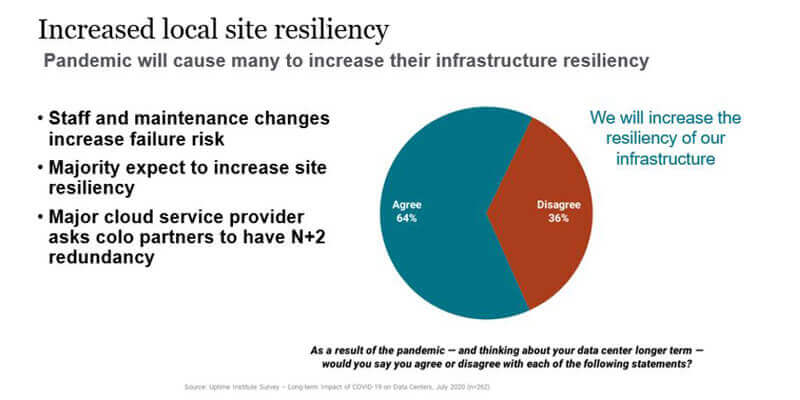This year’s EMEA Digital Channel Summit kicked off with experts Karsten Winther: VP Sales EMEA, Vertiv and Margarete McGrath: Chief Digital Officer EMEA, Dell.
We’re All Hoping to Hit the Digital Accelerator in 2021
Clearly, the recent past has been a tough period for everyone – you don’t need us to tell you that.
However, while customer budgets have tightened, and projects have been pushed back, it’s all happening against a longer term back drop of massive investment in digital transformation.
As analyst company Gartner group pointed out recently: “Top performing enterprises are accelerating digital innovation and leveraging emerging technologies to come out stronger on the other side of the COVID-19 pandemic”. Translating that into numbers, despite a global pandemic, direct digital transformation investment is still growing at a compound annual growth rate (CAGR) of 15.5% from 2020 to 2023 and is expected to approach $6.8 trillion.
And while there has been a lot of investment in public cloud services, it isn’t necessarily to the detriment of enterprise investment. According to a recent survey from Uptime Institute, the enterprise data center is neither dead nor dying. More than half of workloads are expected to remain in on-premise data centers in 2022 and beyond.
We are also expecting strong growth in edge computing accelerated by investment in IoT and, as it ramps up, 5G.
According to IDC, the worldwide Edge computing market will reach $250 billion in 2024 with a compound annual growth rate (CAGR) of 12.5% over the 2019 – 2024 period.
So, while the short-term story may be disruption and contraction in IT budgets, the longer-term picture is much more positive.
Maintain IT Infrastructure Resiliency Through Heel-and-Toe Shifting
While it’s encouraging to know that the longer-term direction faces growth and investment in digital transformation, the short- to- mid-term (the track directly ahead of us) is obviously what we are all focused on.
It would be good to think that there will be nice, long straight stretches of track to accelerate into in 2021, but as recent experience has shown, there will continue to be some chicanes and maybe even some wreckage to steer around.
As IDC spending forecasts show, spending will increase in 2021, but it will take time to return to pre-covid levels and will be uneven across different industries and countries.
The trick is how to maintain momentum while also tackling these obstacles. Racing drivers use the heel-and-toe technique to balance the accelerator and brake as they change down gears. Maintaining that balance between speed and control is what we are all going to have to master. Specifically, there is a balance to be struck between digital acceleration – the gas pedal if you like – and digital infrastructure resiliency - the brake which gives us control.
IT Infrastructure Resiliency Needs to Be Top of Mind
What exactly do we mean by ‘digital IT infrastructure resilience’? Well, there has been a lot of recent investment in specific areas of digital transformation by necessity: remote working, remote education, telemedicine, etc. But that increased reliance and focus on digital services carries with it increased responsibility and importance, both in terms of the IT equipment and the physical infrastructure (power, cooling, etc), that supports it.
On the IT side, as a recent report from Interpol showed, there has been a spike in hacking and malware alongside the pandemic. In fact, cybercriminals are using information supposedly related to the pandemic to breach companies’ defences or exploiting vulnerabilities created by having more remote workers. And it’s a similar story on the facilities side.
A recent report from Uptime Institute revealed that data center operators are planning to increase the amount of physical redundancy per site to protect against future disruption from not only the current pandemic, but crucially future pandemics and climate change. For, example at least one large cloud service provider is asking its colocation partners to ensure N+2 redundancy at all of their sites. That’s likely to drive continued investment in physical resiliency equipment. According to Omdia, the global UPS market will see 5% growth YoY in 2021.

Partner Opportunity
So, in 2021 there will be a number of customers looking to hit the gas pedal and accelerate digital transformation projects. But there will also be a lot of start and stop activity, and a need to make sure digital projects are secure and resilient.
Customers will need guidance on how to balance digital acceleration in the right areas and make sure that digital transformation makes their business more productive. Here’s where we see three areas in which partners can differentiate themselves:
- New digital tech challenging existing skill sets: partners can bridge the gap between the known and the unknown
- Adding value merits revenue: partners who can add value to the customer supply chain can charge a premium price
- Customisation requirements are growing: partners who can bring customisable solutions will win on simplicity and speed
The continued uncertainty from the pandemic, combined with implementing advanced new digital projects, will multiply the potential risk for some customers. Given that heightened risk, they will be looking for trusted partners to guide them through – a skilled ‘pit crew’ if you like, to keep them in the race.
Want to hear more? Watch the full keynote video below.
Were you a Digital Channel Summit spectator? We would love to hear your feedback - click here!






